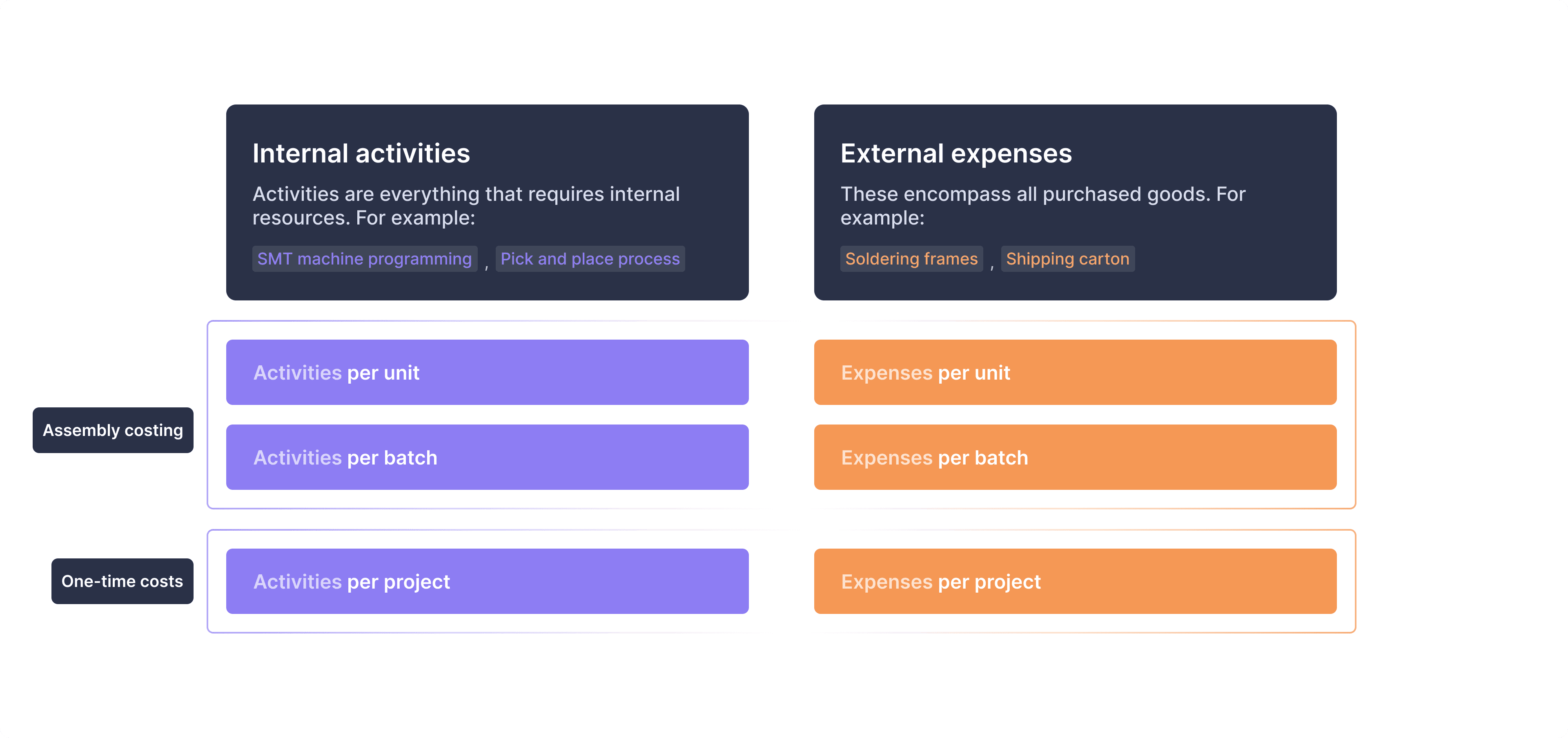Manufacturing Calculation – from Manual Processes towards Smart Automation
June 2, 2023
In this blog, we provide a framework for precise manufacturing costing calculation and show you the way towards automating this process for the benefit of your business.
When it comes to calculating your PCBA manufacturing costs, accuracy and efficiency are a must. After all, approximately one-third of the PCBA costs are manufacturing costs, therefore getting them right is business-critical. But, how to ensure a correct and efficient costing calculation? We might have an idea or two, so read on!
Risks and limits of the status quo
The prevalent approach to manufacturing costing calculation still relies on manual processes using legacy spreadsheets. This outdated method gives rise to various issues that hinder productivity and accuracy in cost estimation.
Manual calculation is:
1. Error-prone
Manual processes often involve tasks such as manually counting pins or components, leading to a higher probability of errors. These errors can result in imprecise calculations, leading to potential financial losses or incorrect decision-making.
2. Slow
Performing tasks like manual pin counting, identifying component positions or comparing batch sizes and sites is a time-consuming process. Particularly for complex boards, the manual calculation becomes even more laborious and inefficient, slowing down the overall request for quotation (RfQ) cycle.
3. Hard to maintain and understand
Over time, these manual calculation spreadsheets become complex and difficult to comprehend, with near to impossible underlying formulas and logic to decipher, let alone introducing new co-workers to them. Additionally, the absence of a clear database structure makes it arduous to break down costs into their respective drivers and update them accordingly, e.g. adjusting for changing electricity costs. Finally, manual spreadsheets are not suitable for adhering to Environmental, Social and Governance (ESG) regulations due to their lack of transparency.
A simple framework to break down the costs
If your calculation process looks a lot like what we just described above, fear not.
The first step towards precise and clean manufacturing costing calculation is to follow a clear framework to understand exactly what costs to include. This is our suggestion of what you should consider:
Internal activities – These are all activities that require internal resources, including labour and machines, for example inspections, machine programming and Pick and Place operations. Calculating these costs involves determining the time required for each activity and multiplying it by the hourly rate, which comprises amortisation, maintenance and running costs.
External expenses – These encompass all purchased goods, such as soldering frames, shipping cartons, external services or consumables, like soldering paste.

Internal and external costs can occur at project-level (known as non-recurring engineering or NRE costs), at batch-level (i.e. machine feeding) and at unit-level (i.e. soldering).
With this in mind, you can be sure to approach the manufacturing costing calculation of your PCBA in the most comprehensive way. The only question is: should you do all this by hand?
Open up new possibilities with automation
The answer is: of course not! To overcome the limitations of manual processes, moving towards an automated manufacturing costing calculation is essential. But how? Through the seamless integration of the design.
When your automated manufacturing costing calculation is based on your design, automation happens in two ways:
Automation by automatic Activity selection – The necessary activities and expenses get automatically selected based on the specific design and included in the calculation.
Automation by extracting cost drivers – The relevant information from PCB, BOM and Pick and Place are automatically extracted from the design and sourcing process.
As you can imagine, automating your manufacturing costing calculation has several advantages for your business.
Automatic calculation is:
1. Error-free
The integration of the design eradicates errors arising from manual processes, hence ensuring very accurate cost estimation.
2. Fast
Automation enables faster and more reliable decision-making by facilitating easy comparison of key factors, such as site options, batch sizes and production lines. This results in quicker and even instant price indications.
3. Transparent and easy to maintain
Automated systems allow businesses to quickly adapt to changes, such as fluctuating energy prices, while maintaining transparency for ESG compliance. Additionally, they provide clear overviews for production planning, enabling efficient resource allocation and actual time forecasting.
Ready to switch?
Manual calculation of manufacturing costs for your PCBA can drag your business down. On the contrary, taking a first step towards automation will optimise your business’ margins, make it compliant with regulations and more adaptable to changes.
If all this sounds good, the Luminovo software might be the tool for you. We’d be glad to show you the huge potential of streamlining your manufacturing calculation process, so book a live demo with us!



